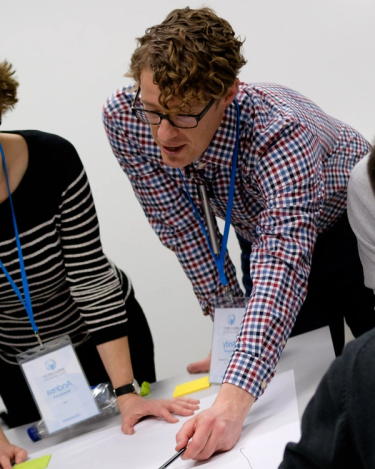Services
I offer a multi-disciplinary, collaborative, and hands-on approach to information architecture and content design and engineering.

How I Work
As an independent consultant, I have the luxury of being nimble and flexible in how I contribute to a project. This allows me to adapt to the requirements of the problem at hand—in whatever state it’s in.
Depending on a project’s needs, I may bridge a knowledge and experience gap for an organization that is missing a critical skillset. Or lead a team that has the know-how, but lacks direction to get where they need to go. Or immerse myself in a problem space and deliver an informed, outcome-based recommendation for a specific design goal.
Don’t worry—I will also help you decide which of these approaches is best for your goals, project, and team.
How I Can Help
After a decade and a half in user experience, information architecture, design research, and content strategy consulting, I have accumulated a wide-ranging set of methods and strategies I can bring to a project.
As an independent consultant, I focus on a subset of practices in which I can create the most significant impact for my clients.
Information Architecture
Information architecture (IA) is the structural design of a shared information space. Effective IA creates meaningful, goal-oriented connections between digital content, user needs, technical requirements, and business goals.
I specialize in research-driven modeling, design, and validation techniques that produce system-wide solutions for information organization, labeling, and navigation.
Common information architecture activities include:
- Collaborative organizational alignment on goals, priorities, and target outcomes
- Synthesis of existing research and scoping and execution of additional research efforts as warranted
- Qualitative and quantitative content and structure assessment, using both ML/NLP techniques and eyeballs-on-screens approaches as warranted
- Technical information architecture, including schema definitions, text extraction, classification scheme design, taxonomy design, and ontology creation
- Content-driven wireframing, page design, and template development
- Coaching internal teams on the maintenance and iteration of work we've done together to ensure sustained value over time
Full Stack Content Design & Engineering
Content design and engineering focuses on creating content systems and workflows that produce flexible, reusable content collections. Well-designed and developed content works across contexts and use cases, allowing your intellectual property to create more value over a longer lifespan.
My skillset encompasses the full spectrum of content strategy, design, and engineering. I help my clients prudently integrate design and technology solutions and purposefully orchestrate them with the people and processes needed to create sustainable, goal-oriented content ecosystems.
Common content design and engineering activities include:
- Production workflow process diagnosis, modeling, and improvement
- Full stack content modeling and development, from conceptual design through model implementation and CMS integration
- Content store and CMS customization, including schema authoring and custom plugin design and development
- Collaborative formulation of content design principles and voice, tone, and style guidelines
- Coaching internal teams on methods to improve the processes and technologies supporting content workflow and operations